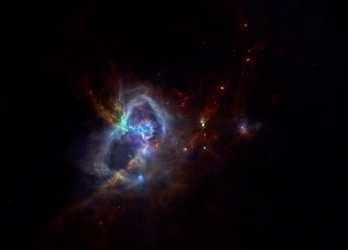

Agency
Lifecycle of stars
Lifecycle of stars
The James Webb Space Telescope can peer through the dusty envelopes around new-born stars. Its superb sensitivity will allow astronomers to directly investigate faint protostellar cores – the earliest stages of star birth. Webb will also see the most massive stars explode as supernovae and leave behind more clouds of dust, gas, and precious heavy elements that enrich the cosmos to form new generations of stars.





